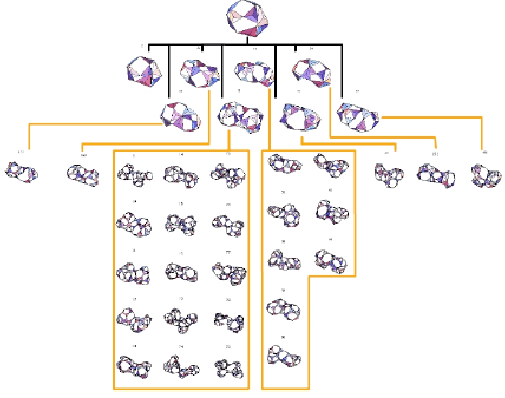|
Morphogenesis of a Cellular Automaton on a 2D Substitution Network
Martijn Cloos
University of Amsterdam
Abstract
Multicellular life forms have a characteristic morphology in every stage of life. The cells making up
these morphologies have various methods that they can use to communicate with one another. Some of these methods can signal over large distances. For example, hormones that are made in one part of the organism can stimulate other cells in remote parts of the organism. Other methods might only work in close proximity to the cell. How these cells interact is interesting for various theoretical reasons, like explaining how a cell in an embryo knows to which structure it belongs or which it should form. In medicine, practical use for such understanding can be found in areas ranging from regenerating organs to cancer treatment. There are many models that simulate the growth of organisms. For example, the substitution systems used to produce various plant-like structures and the cellular Potts model for the development of structures like chicken wings.
There are many models that simulate the growth of organisms. For example, the substitution systems used to produce various plant - like structures and the cellular Potts model for the development of structures like chicken wings.
This study is based on an NKS approach to simulate how cell growth can influence morphology. What makes this model different is that it takes on the perspective of the cell. In this model an analogy is made between the DNA and the rule set of a cellular automaton. The model emulates a simplified cell that can be programmed using a CA. This is achieved by implementing a CA on a substitution network. This way the CA can determine where and when the cell should divide. In this study a simplified version is used, taking into account only nearest neighbor interactions acting on a two-dimensional array of cells in three-dimensional space. The evolution of the morphology of the organisms produced by various rules is studied and compared with living organisms. From these results suggestions can be made for a more general model, suitable for better comparisons with living organisms.

Above: The evolution of the organisms produced by various rules. Showing
different rules developing into different morphologies after passing
through the same morphology in an earlier state.
|